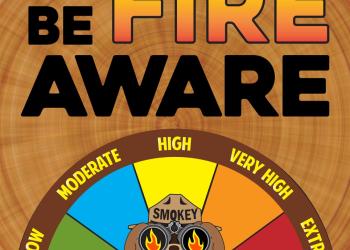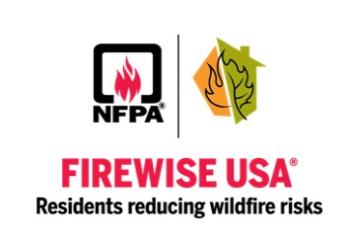Prevention
You know the old saying about an ounce of prevention is worth a pound of cure? Basically the old proverb is telling us it is easier to prevent something from happening than trying to fix it later. When it comes to wildfires, preventing them from happening in the first place is the most effective strategy to reduce loss of property and life. Check out all the wonderful prevention resources below for information on how you can help prevent wildfires.
REPORT WOODS ARSON: (318) 433-2558
Only You!

You play a valuable role in preventing wildfires. Did you know the majority of wildland fire occurrences are human caused? You can make the difference! Learn more about Smokey Bear and how you can help prevent wildfires!
Be Firewise

Firewise USA is a voluntary program that provides a framework to help neighbors get organized, find direction, and take action to increase the ignition resistance of their homes and community.
Additional Resources for Fire Prevention:
As an entity of the U.S. Department of Homeland Security's Federal Emergency Management Agency (FEMA), the mission of the U.S. Fire Administration is to support and strengthen fire and emergency medical services (EMS) and stakeholders to prepare for, prevent, mitigate and respond to all hazards.
Cooking and heating are the leading causes of home fires and fire injuries, and winter months are the peak time for fire-related deaths. Fire Prevention Week every fall is the perfect time to review and practice fire safety.
Home Fire Prevention and Safety
Every year, devastating wildfires burn across the United States. At the same time, a growing number of people are living where wildfires are a real risk. While these fires will continue to happen, there are things you can do to protect your home and neighborhood as well as your family’s safety. The Firewise USA® program is here to help you get started.
Defensible space, coupled with home hardening, is essential to improve your home’s chance of surviving a wildfire. We can learn a lot from western states that have had significant wildfires that burned through communities and the homes that survived.
- Clean roof surfaces and gutters of pine needles, leaves, branches, etc., regularly to avoid accumulation of flammable materials.
- Remove portions of any tree extending within 10 feet of the flue opening of any stove or chimney.
- Maintain a screen constructed of non-flammable material over the flue opening of every chimney or stovepipe. Mesh openings of the screen should not exceed 1/2 inch.
- Remove branches from trees to height of 15 feet.
- Dispose of stove or fireplace ashes and charcoal briquettes only after soaking them in a metal pail of water.
- Store gasoline in an approved safety can away from occupied buildings.
- Propane tanks should be far enough away from buildings for valves to be shut off in case of fire.
- Keep area clear of flammable vegetation.
- All combustibles such as firewood, picnic tables, boats, etc. should be kept away from structures.
- Garden hose should be connected to outlet.
- Addressing should be indicated at all intersections and on structures.
- All roads and driveways should be at least 16 feet in width.
- Have fire tools handy such as: ladder long enough to reach the roof, shovel, rake, and a bucket for water.
- Each home should have at least two different entrance and exit routes.
Download this personal wildfire action plan designed to guide you through the steps you can take today to help protect your family and property during a wildland fire.
- Check for local fire restrictions before going camping.
- Keep a shovel and water available.
- Build campfires in an area free from litter, grass, and other flammable material.
- Use a campfire ring when possible.
- Keep fire small and controllable.
- Never leave a campfire unattended.
- Drown all campfires and charcoal with water and stir until ashes are cold to the touch.
- Make sure the campfire is DEAD OUT before leaving the site.
- Build debris piles away from structures, vegetation, power lines or other flammable material.
- Cover piles and wait until after it rains to burn.
- Clear litter and grass at least 5 feet away from piles.
- Keep piles small and free of dirt.
- If burning debris in a barrel, cover top with a 1/2-inch-or-less mesh screen.
- Never leave a burning debris pile unattended.
- Make sure the pile is DEAD OUT before leaving the site.
- Drown all campfires and charcoal with water and stir.
- Keep fires small and controllable.
- Never leave a campfire unattended.
- Completely extinguish all cooking and warming fires, even if you're leaving camp for a short period of time.
- Bring water, bucket, and shovel. Drown and stir campfire with water until ashes are cold to the touch.
- Be sure the fire is dead out before you leave.
- Limit use of motorized vehicles to established roads or trails.
- Do not park vehicles over dry grass or brush - hot exhaust systems can start fires.
- Check ATV's and chainsaws for required spark arrestors.
- Smoke only in enclosed vehicles and buildings, or in areas clear of flammable vegetation.
- Use an ashtray and completely extinguish cigarette butts.
- Before visiting the forest, check with local agencies to find out if fire restrictions are in effect.
For the Vehicle:
- Never park or drive any vehicle through dry grass.
- Grease wheel bearings, check tires, and secure safety chains on trailers.
- All ATV/OHV's require a properly functioning spark arrestor.
- Check and clean the spark arrestor.
- Carry a fire extinguisher.
- Use an ashtray; Completely extinguish cigarettes.
For equipment:
- Sparks from chainsaws, welding torches, and other equipment can cause wildfires.
- Please check local restrictions before using such equipment.
- Keep a fire extinguisher and shovel readily available at all times.
- Install and maintain an effectively working spark arrestor.
- Allow a hot saw to cool down before refueling.
- Refuel a chainsaw in an area free of flammable material.
- Clean gas and oil off the chainsaw after refueling.
- Never place a hot chainsaw on any flammable material.
- A spark arrestor is a mechanical device that traps or destroys hot exhaust particles from an internal combustion engine.
- All equipment with internal combustion engines, except highway passenger vehicles, require spark arrestors.
- Make sure that an effectively working spark arrestor is properly maintained and properly installed.
- Keep a shovel and fire extinguisher readily available when operating equipment.
- Let equipment cool down before refueling.
- Refuel equipment in an area free of flammable material.
- Avoid striking rocks with equipment. Blades can start a fire.
- All off-highway vehicles are required to have an effectively working spark arrestor.



